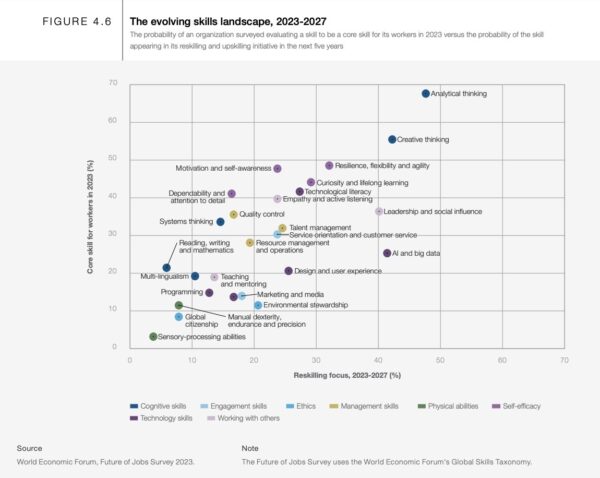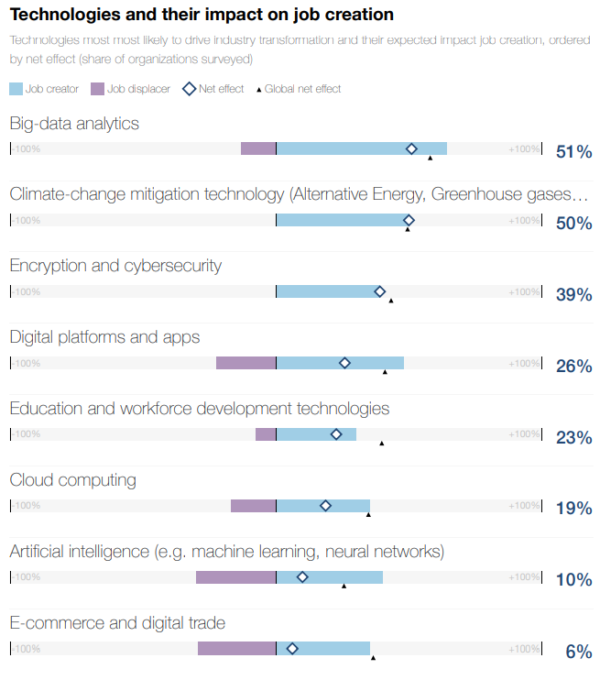…one of the human brain’s biggest advantages over AI is the fact that it is attached to a real human body. Indeed, expectations that physical and manual work could be displaced by machines have decreased, and companies surveyed for the report have revised down their estimates for further automation –they think 42% of tasks could be automated by 2027, compared with predictions in the Future of Jobs Report 2020 that 47% could go this way by 2025.
Origen: Jobs AI won’t replace, according to the World Economic Forum | World Economic Forum
The skills most in demand are analytical and creative thinking. Other skills near the top of employers’ wish lists are:
- Empathy and active listening
- Motivation and self-awareness
- Leadership and social influence
- Talent management
- Service orientation and customer service.
These are all highly human skills that remain outside the skill set of AI.

Jobs in education
Jobs growth of 10% is expected in the education industry by 2027, according to surveys for the Future of Jobs Report 2023. This could mean another 3 million jobs in vocational education and higher education.
“This growth is particularly prevalent in non-G20 countries where it is expected to be about 50% higher than in G20 countries,” the report says.
High uptake of education and workforce development technologies is seen as one big driver of job creation. The other is increasing efforts by organizations to close skills gaps as AI and other technologies rewrite the rules on the capabilities that employees and employers need.
Jobs in agriculture
There is expected to be a 30% rise in jobs for agricultural professionals in the coming five years, according to the 2023 report. That’s an additional 3 million roles.
This is only partly because workers in this area are far less likely to be impacted by generative AI and Large Language Models such as ChatGPT. Other reasons include shortening supply chains, with more small farms selling directly to consumers rather than through intermediaries.
The rising use of agricultural technologies and increasing investments in climate change adaptation are also leading to an expansion in agriculture jobs.
Supply-chain and logistics jobs
As in the agriculture sector, a shift towards the localization of supply chains is expected to be one of the largest gross job creators in the logistics industry, The Future of Jobs Report 2023 points out, however, that it could also lead to some job losses, as could supply shortages, rising input costs and a global economic slowdown – at least in the short term.
A net increase of 2 million jobs, or 12.5% of the workforce, is expected for the supply-chain and logistics sector, according to surveys for the 2023 report. Trends in this area are being impacted by shortages of heavy truck and lorry drivers in mid-2022. But relatively low expectations about the impact of autonomous vehicles on job creation, as shown in the chart below, also suggest that the profession of driver is not likely to disappear in the near future.

